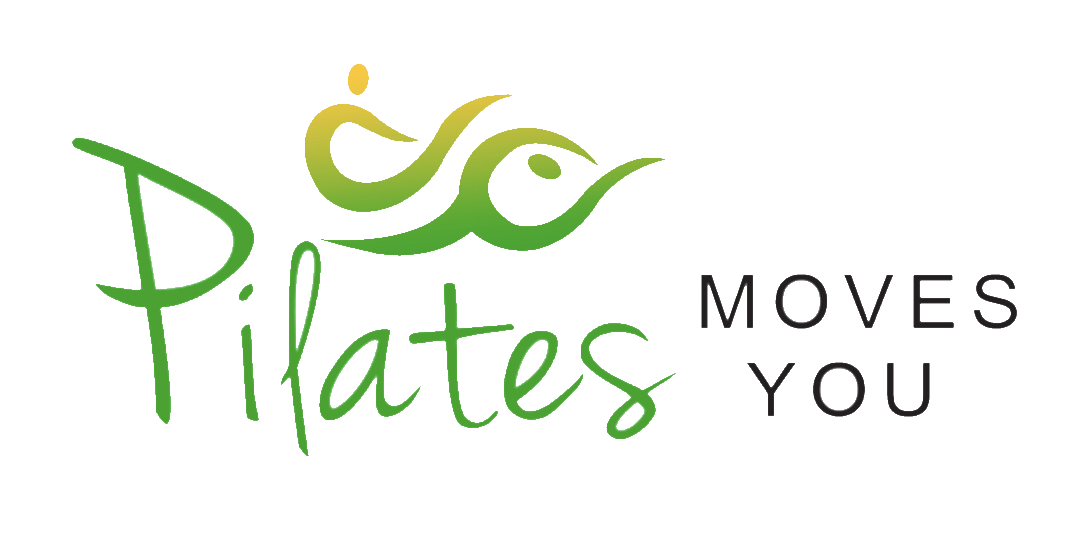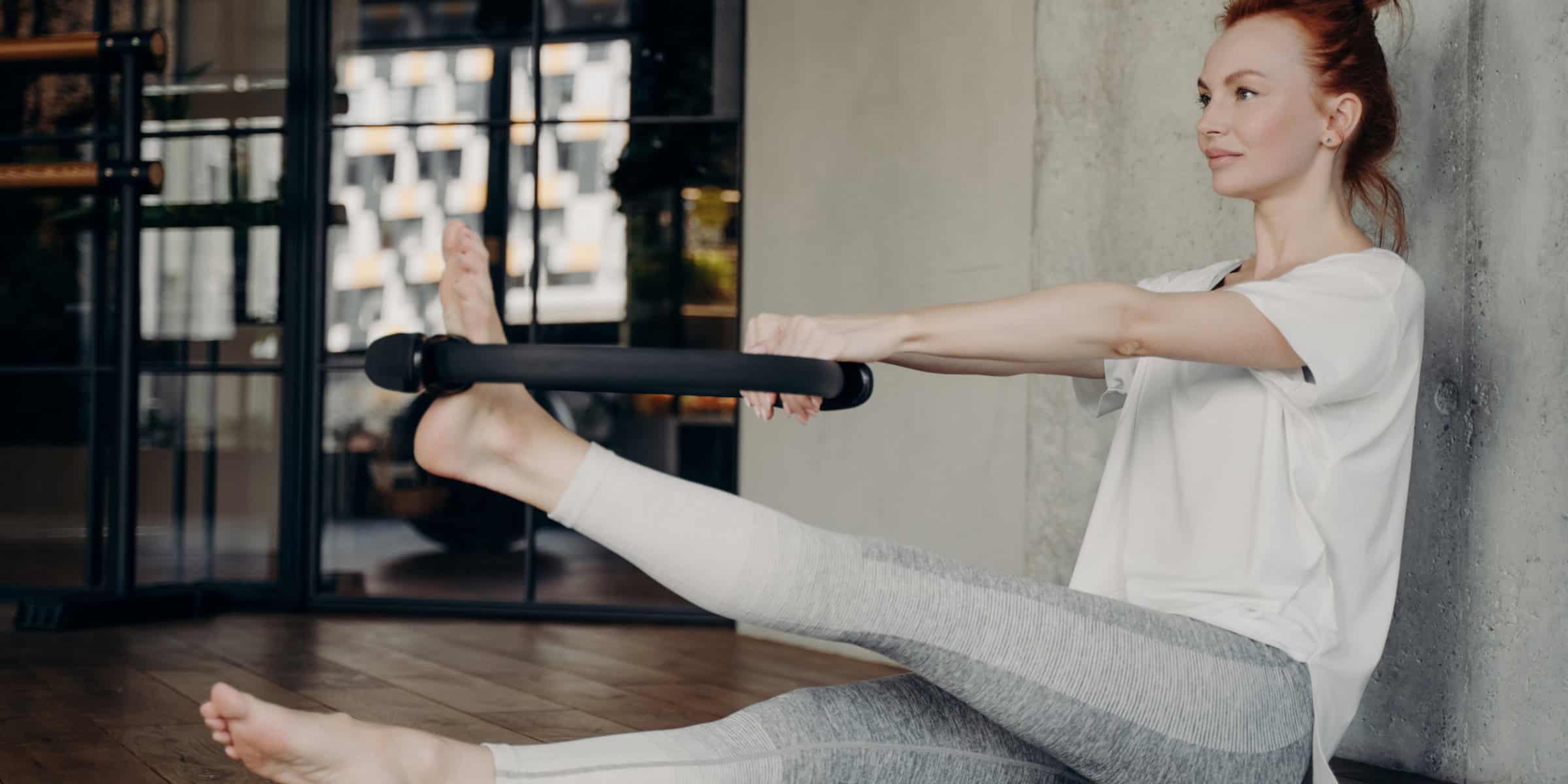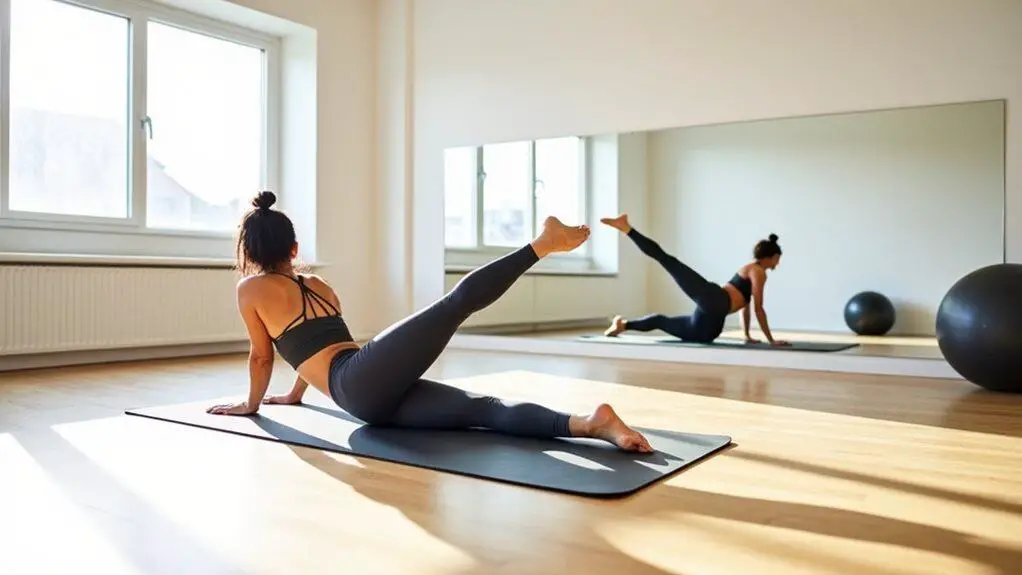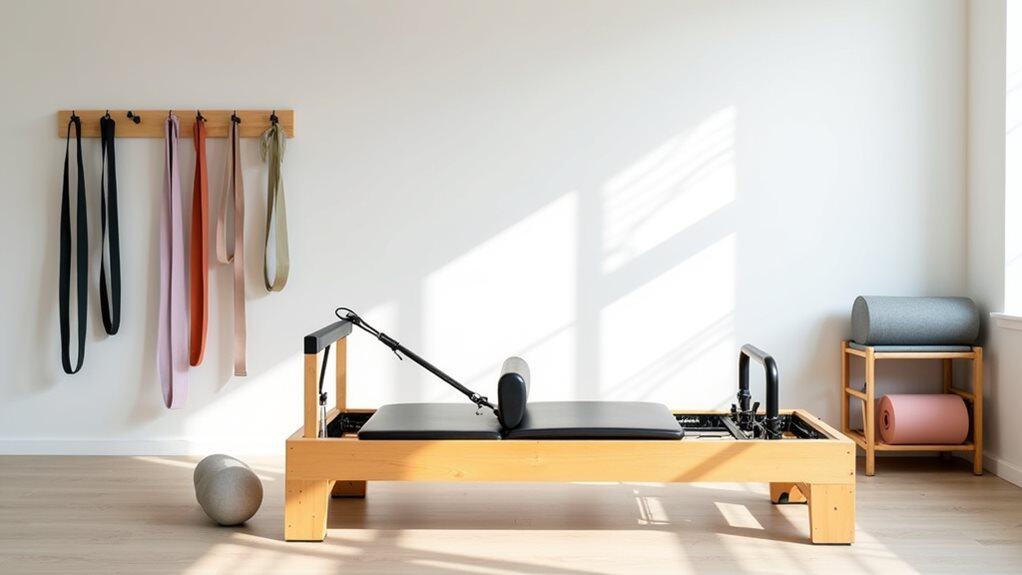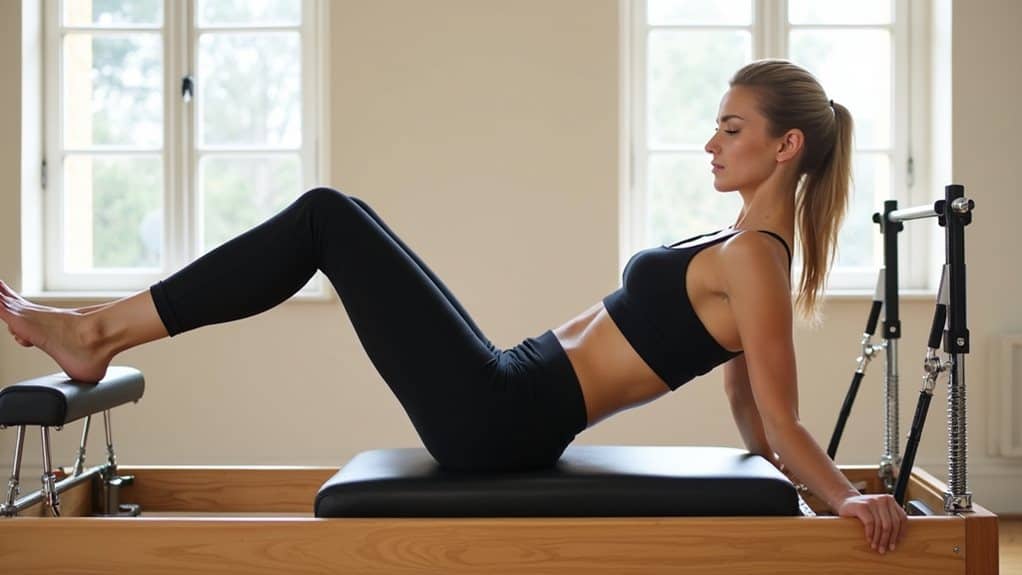Are you tired of feeling restricted by the limited workout options available at your local gym? Do you crave the freedom to workout whenever and wherever you want without sacrificing the effectiveness of your routine?
Look no further than Pilates ring workouts, the ultimate solution to achieving a full-body workout in the comfort of your own home.
With Pilates ring workouts, you have the freedom to choose when and where you exercise, without sacrificing the benefits of a studio workout.
In this article, we will guide you through the basics of Pilates ring workouts, including upper body, lower body, core, and full-body exercises, as well as provide tips for maximizing the effectiveness of your at-home workouts.
Get ready to discover the freedom of Pilates ring workouts and take your fitness routine to the next level.
Key Takeaways
- Pilates ring workouts offer a full-body workout that can improve strength, flexibility, and overall health.
- Pilates rings are versatile, cost-effective, lightweight, and portable, making them suitable for people of all fitness levels.
- Incorporating Pilates ring workouts regularly into a fitness routine can provide benefits such as improved posture, core strength, and flexibility.
- Proper form and muscle engagement, breathing techniques, and consistency are important for effective Pilates ring workouts that can be done at any time in the comfort of your own home.
Introduction to Pilates Ring Workouts
Get ready to transform your living room into a Pilates studio and unlock a whole new level of fitness with the versatile and challenging Pilates ring workouts! These workouts are a great way to strengthen and tone your muscles, improve your flexibility, and boost your overall health.
Using a Pilates ring, also known as a magic circle, you can perform a wide variety of exercises that target different muscle groups and increase your range of motion.
One of the main benefits of Pilates ring workouts is that they are suitable for people of all fitness levels. Whether you’re a beginner or an experienced athlete, you can customize your workout to meet your individual needs and goals.
The Pilates ring is a lightweight and portable piece of equipment that can be easily stored and used at home. You don’t need a lot of space or expensive gym equipment to get a great workout with a Pilates ring.
To get started with Pilates ring workouts, all you need is a Pilates ring and a comfortable mat to exercise on. There are many online resources and instructional videos that can guide you through the different exercises and help you develop a routine that works for you.
By incorporating Pilates ring workouts into your daily routine, you can enjoy the benefits of improved strength, flexibility, and overall health. Understanding Pilates ring workouts is the first step towards discovering the freedom and joy of at-home fitness.
Understanding Pilates Ring Workouts
Pilates was developed by Joseph Pilates in the early 20th century as a form of exercise to improve strength, flexibility, and overall health.
Pilates has a rich history, with its origins dating back to the early 20th century when Joseph Pilates developed the exercise system.
Joseph Pilates was a German physical trainer who created the method as a way to rehabilitate injured soldiers during World War I.
He believed that physical and mental health were closely linked and developed a system of exercises that focused on controlled movements, breathing, and posture.
To understand the history of Pilates better, let’s have a look at the timeline below. It highlights the milestones that shaped the development of the Pilates method and how it has evolved over the years.
From its humble origins in a small studio in New York City to its current popularity around the world, Pilates has come a long way. Understanding the history of Pilates can help you appreciate the significance of the Pilates ring workouts that are available today.
| Year | Event | Milestone |
|---|---|---|
| 1912+ | Joseph Pilates develops the Pilates method | Origins |
| 1926 | Joseph Pilates opens his first studio in New York City | Growth |
| 1934 | The “Your Health…” book on Pilates is published | Recognition |
| 1980s | Pilates continues to gain popularity in the dance community | Evolution |
| 2000s | Pilates becomes a mainstream fitness trend | Globalization |
Now that we have a better understanding of the origins and history of Pilates, let’s explore the different types of Pilates rings that are available and how they can help you achieve your fitness goals.
Types of Pilates Rings
You might be surprised to learn about the different types of rings available for your Pilates routine. Pilates rings, also known as magic circles, come in various sizes, materials, and levels of resistance. Choosing the right one for you can make a significant difference in your workout experience and the benefits you can reap from using them.
Here are four things to consider when choosing your Pilates ring:
- Size: The standard size of a Pilates ring is 14 inches in diameter, but some are smaller or larger. Find one that fits comfortably between your legs or in your hands.
- Material: Some rings are made of metal, while others are made of plastic or rubber. Decide what feels best for your grip and comfort level.
- Resistance Level: Rings come in different levels of resistance, ranging from light to heavy. Beginners may want to start with a lighter resistance and work their way up.
- Price: Pilates rings range in price, from budget-friendly options to more expensive ones. Choose one that fits your budget and meets your needs.
As you explore the different types of Pilates rings, keep in mind the benefits they can provide, such as improved posture, core strength, and flexibility. By choosing the right Pilates ring and incorporating it into your routine, you can take your workout to the next level.
Now, let’s move on to some basic exercises you can do with your Pilates ring.
Basic Exercises
Once you’ve selected the right Pilates ring, it’s time to start incorporating some basic exercises into your routine. Before beginning any exercise, it’s essential to ensure proper form and posture. You can modify the exercises to suit your fitness level and avoid injury.
One of the essential aspects of Pilates is proper breathing techniques. Inhale through your nose and exhale through your mouth as you perform each exercise. This breathing technique helps activate your core muscles and keep you focused.
Additionally, stretching before and after your workout helps prevent injury and improves flexibility. Incorporating these basic exercises into your routine will help you achieve your fitness goals and improve your overall health.
As you progress in your Pilates ring workout, you can move on to upper body workouts. These exercises target the arms, shoulders, and back muscles to strengthen and tone them.
Upper Body Workouts
Get ready to tone and sculpt your arms, chest, and back with these upper body Pilates ring exercises that you can easily do at home. With just a Pilates ring and some space, you can achieve a full upper body workout that will leave you feeling strong and energized.
Here are some exercises to help you get started:
- Chest press: Lie down on your back with your knees bent and feet flat on the ground. Hold the Pilates ring with both hands and extend your arms out in front of you. Inhale as you lower the ring towards your chest, keeping your elbows close to your body. Exhale as you push the ring back up to the starting position.
- Shoulder press: Stand with your feet hip-width apart and hold the Pilates ring with both hands at shoulder height. Inhale as you lift the ring overhead, keeping your elbows slightly bent. Exhale as you lower the ring back down to shoulder height.
- Arm curls: Stand with your feet hip-width apart and hold the Pilates ring with both hands in front of your body. Inhale as you curl the ring towards your chest, keeping your elbows close to your body. Exhale as you lower the ring back down to the starting position.
- Triceps press: Stand with your feet hip-width apart and hold the Pilates ring with both hands behind your head. Inhale as you lower the ring down towards your back, keeping your elbows close to your head. Exhale as you push the ring back up to the starting position.
- Back extension: Lie down on your stomach with your arms extended out in front of you, holding the Pilates ring with both hands. Inhale as you lift your chest and arms off the ground, squeezing the ring between your hands. Exhale as you lower back down to the starting position.
Incorporating these exercises into your routine will help you build strength and definition in your upper body. And the best part? You can do them from the comfort of your own home, giving you the freedom to work out on your own schedule.
Next, we’ll explore some lower body Pilates ring workouts to complete your full-body routine.
Lower Body Workouts
Now that we’ve covered upper body workouts with the Pilates ring, let’s move on to the lower body. This is where the Pilates ring really shines, as it can help with glute activation and thigh toning. By incorporating the ring into your lower body exercises, you can add resistance and increase the intensity of your workout.
To get started, try incorporating the Pilates ring into your squats. Place the ring between your thighs and squeeze as you lower into the squat. This will activate your glutes and inner thighs, making the exercise more challenging and effective. You can also use the ring for leg lifts, placing it above or below your knees for added resistance.
Another great lower body exercise with the Pilates ring is the bridge. Lie on your back with the ring between your thighs and lift your hips off the ground, squeezing your glutes as you go. This will help to tone your thighs and lift your butt. You can also try incorporating the ring into lunges, either holding it in front of you or placing it between your thighs as you lunge forward.
By incorporating the Pilates ring into your lower body workouts, you can take your routine to the next level and see real results. Don’t be afraid to experiment with different exercises and positions to find what works best for you. Next up, we’ll be discussing core workouts and how you can use the Pilates ring to strengthen your abs and obliques.
Core Workouts
Let’s talk about core workouts! When it comes to building a strong core, there are three key areas to focus on: the abdominals, obliques, and lower back.
By incorporating exercises that target each of these areas into your routine, you can improve your posture, balance, and overall stability.
So grab a mat and let’s get to work on strengthening that core!
Abdominal Exercises
With the Pilates ring nestled between your legs, you’ll feel your abs engage as you slowly lower your legs towards the floor. Abdominal exercises using the Pilates ring can be done in various positions, making it a versatile and challenging workout. Incorporating variations and progressions can help you target specific areas of your abs and improve your overall core strength.
To make your workout more challenging, try adding resistance by squeezing the ring as you perform each exercise. This will intensify the engagement of your abs and help you develop greater control over your movements. Below is a table outlining some variations and progressions you can try with the Pilates ring to take your abdominal workout to the next level:
| Exercise | Variation | Progression |
|---|---|---|
| Leg lowers | Single leg lowers | Double leg lowers |
| Crunches | Bicycle crunches | Straight leg crunches |
| Plank | Side plank | Plank with knee tucks |
Incorporating these variations and progressions into your Pilates ring workouts will challenge your core in new ways and help you achieve greater abdominal strength and definition. Next, we’ll explore oblique exercises to target the sides of your abs and further enhance your core workout.
Oblique Exercises
Incorporating oblique targeting exercises into your routine will help you achieve a well-rounded core workout that goes beyond just your six-pack abs. Here are three benefits of adding oblique exercises to your Pilates ring workout:
- Improved posture: Oblique exercises help strengthen the muscles that support your spine, which can lead to better posture and a reduction in back pain.
- Toned waistline: Targeting your obliques can help create a more defined waistline, giving you a more sculpted look in your midsection.
- Increased stability: Strong oblique muscles can improve your overall stability and balance, making it easier to perform other exercises and daily activities.
By adding oblique exercises to your Pilates ring workout, you can achieve a well-rounded core workout that targets all aspects of your midsection.
In the next section, we’ll dive into lower back exercises that can help improve your overall core strength and flexibility.
Lower Back Exercises
Now that we’ve finished discussing oblique exercises, let’s move on to lower back exercises. These exercises are essential for overall core strength and stability. The lower back is often neglected in traditional ab workouts, but incorporating lower back exercises into your routine can help alleviate lower back pain and improve posture.
The benefits of lower back exercises include improved posture, increased flexibility, and reduced risk of injury. However, it’s important to note that these exercises can be challenging for beginners. Modifications can be made, such as starting with smaller movements and gradually increasing intensity. It’s important to listen to your body and not push yourself too hard, as this can lead to injury.
With consistent practice and patience, you’ll soon see improvements in your lower back strength and overall core stability.
Moving on to the next section about full body workouts, let’s explore how incorporating the Pilates ring can enhance your at-home workouts even further.
Full Body Workouts
Get ready to target every muscle group with full body Pilates ring workouts. These workouts are the perfect way to achieve a full body workout in the comfort of your own home. With a combination of cardio options and resistance training, you’ll be able to work on your endurance while toning your muscles.
To get started, we recommend incorporating the following exercises into your full body routine:
| Exercise | Muscle Group Targeted | Difficulty Level |
|---|---|---|
| Standing Leg Press | Quads, Glutes, Hamstrings | Intermediate |
| Chest Press | Chest, Shoulders, Triceps | Beginner |
| Plank with Leg Press | Core, Glutes | Advanced |
These exercises provide a great foundation for a full body workout with the Pilates ring. As you progress, you can add more exercises or increase the difficulty level of these exercises to continue challenging yourself.
Remember to listen to your body and take breaks when needed. It’s better to take a break than to risk injury. With consistent practice, you’ll be able to see improvements in your strength, endurance, and overall fitness.
Now that you have a better understanding of full body Pilates ring workouts, let’s move on to some tips for effective workouts. By following these tips, you’ll be able to maximize your workout and achieve your fitness goals in no time.
Tips for Effective Pilates Ring Workouts
To maximize the effectiveness of your Pilates ring workouts, it’s important to focus on proper form and engage your muscles throughout each exercise. Pilates ring benefits include improved muscle tone, increased flexibility, and enhanced core strength. Here are some tips for effective Pilates ring workouts:
- Choose the right equipment: When purchasing a Pilates ring, make sure it’s made from durable materials and has enough resistance to challenge your muscles. Look for one with comfortable handles and a non-slip surface to prevent slipping during exercises.
- Warm up before starting: Before beginning your Pilates ring workout, it’s important to warm up your muscles to prevent injury. You can do this by performing some light cardio or stretching exercises.
- Focus on form: To get the most out of your Pilates ring workout, it’s essential to focus on proper form. Make sure your movements are slow and controlled, and keep your core engaged throughout each exercise. This will help you target the right muscles and prevent injury.
By following these tips, you can achieve a more effective and efficient Pilates ring workout. Don’t forget to listen to your body and take breaks if needed. Incorporating Pilates ring workouts into your fitness routine can help you achieve a greater sense of freedom and control over your body.
As you wrap up your Pilates ring workout, it’s important to remember that consistency is key. Make sure to incorporate these exercises into your fitness routine regularly to see the best results.
In the next section, we’ll discuss some additional tips for maximizing the benefits of your Pilates ring workouts.
Final Thoughts
As you wrap up your Pilates ring workout, don’t forget to incorporate these tips into your routine to achieve a greater sense of control over your body and maximize the benefits of your workouts.
Working out at home with Pilates ring accessories has so many benefits. You get to save on gym memberships and the commute to the gym. Plus, you have the freedom to work out at your own pace and on your own schedule.
One of the greatest benefits of home workouts is the convenience factor. You don’t have to worry about coordinating schedules with a gym buddy or waiting in line for the machine you want to use. With the Pilates ring, you have a versatile piece of equipment that gives you a full-body workout, so you don’t have to worry about switching between machines or equipment. Plus, you can easily store it away when you’re done, so it’s not taking up space in your living room.
Incorporating Pilates ring workouts into your routine is a great way to achieve the freedom you desire. With the ability to work out at home, you have more control over your fitness journey and can tailor your workouts to your individual needs and goals.
Remember to start with basic exercises and gradually increase the difficulty level as you become more comfortable with the ring. Always maintain proper form and alignment to prevent injury and achieve optimal results.
With consistency and dedication, you can bring the studio to your living room and discover the freedom of Pilates ring workouts at home. So why not give it a try and see the difference it can make in your fitness journey?
